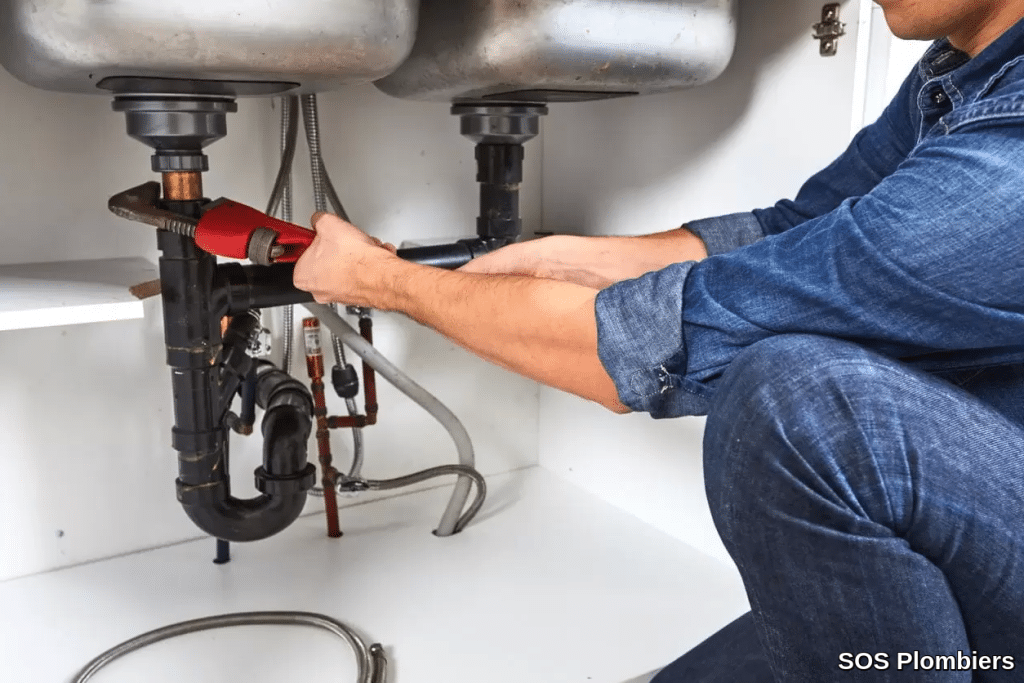Check the Pressure of All Faucets
First and foremost, before getting worried, check if the pressure issue affects all the faucets in your house. Test the pressure in the kitchen, bathroom, and outside for garden faucets. If the drop in pressure affects all faucets, the problem might be more complex.
The Water Heater May Be the Culprit
Indeed, if the hot water experiences a more noticeable drop in pressure, the water heater might be the cause. Over time, obstructions or corrosion can form inside the water heater, leading to a drop in pressure. In this case, it is best to call a professional plumber to inspect and safely repair the issue.
Furthermore, it's essential to regularly drain the water heater to remove harmful deposits that can cause pressure and energy efficiency issues.

Limescale: A Common Cause
On the other hand, if the pressure is low at a single faucet, limescale deposits might be clogging the faucet or filter. Check and clean the anti-limescale filter at the faucet's tip to see if it improves the pressure. If necessary, soak the filter in white vinegar or replace it.
Limescale is a common enemy of plumbing systems, especially in regions with hard water. It can gradually reduce the size of the water passages, leading to a decrease in pressure.
The Water Heater May Be the Culprit
Indeed, if the hot water experiences a more noticeable drop in pressure, the water heater might be the cause. Over time, obstructions or corrosion can form inside the water heater, leading to a drop in pressure. In this case, it is best to call a professional plumber to inspect and safely repair the issue.
Furthermore, it's essential to regularly drain the water heater to remove harmful deposits that can cause pressure and energy efficiency issues.
Limescale: A Common Cause
On the other hand, if the pressure is low at a single tap, limescale deposits might be clogging the faucet or filter. Check and clean the anti-limescale filter at the faucet's tip to see if it improves the pressure. If necessary, soak the filter in white vinegar or replace it.
Limescale is a common enemy of plumbing systems, especially in regions with hard water. It can gradually reduce the size of the water passages, leading to a decrease in pressure.

Widespread Problem Throughout the House
Next, if the water pressure is low throughout the house, examine the pressure reducer and the shut-off valve. You can adjust the water flow if necessary and replace any faulty valve. Also, check for water leaks in the toilets or other places in the house, as they can also affect the overall pressure.
Detecting and Repairing Water Leaks
To detect leaks, first remove the toilet tank lid and add a few drops of food colouring to the tank water. If the colour appears in the bowl without flushing, a leak is likely. You will then need to replace the faulty seal or mechanism.
Also, make sure to regularly check pipes and fittings for signs of leaks. Indeed, a small leak can cause significant damage over time, and it is best to repair them quickly to avoid pressure issues and high water bills.
In conclusion, if, despite all your efforts, the water pressure problem persists, it is recommended to seek out qualified professionals like our experienced team at SOS Plumbers. We are available 7 days a week to help you solve your water pressure issues and ensure your daily comfort.


